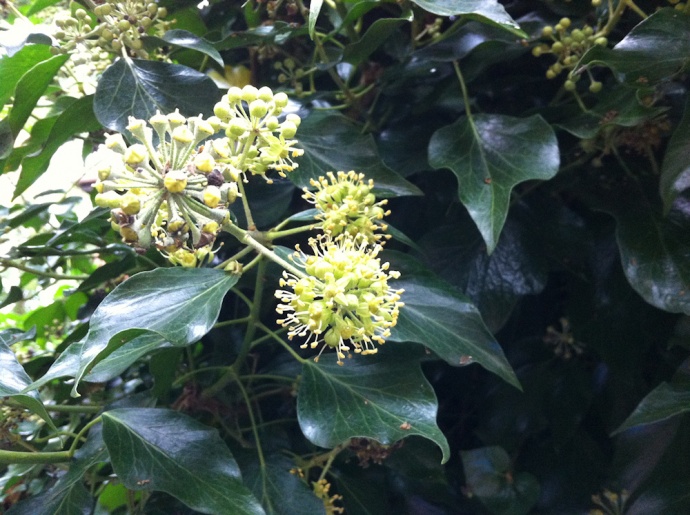Sharon Bayne wrote about Ivy in Woodlander No.28.
Common ivy provides essential food for a variety of birds. Also, ivy flowers late, in September and October. The flowers in small green clusters (found on mature plants) are not showy, but they provide a boost of nectar just when other plants are setting seed.
This is important for honey bees, which are suffering high rates of decline. A recent study by the University of Sussex found that over 80% of both pollen and nectar collected by honey bees in early autumn was from ivy plants. If you want to give an extra life-line to our honey bees, allow more ivy to mature and flower, instead of tidying it away.
Ivy berries ripen November to January, providing bird food in the most severe winter months
Ivy doesn’t directly damage healthy trees and it provides hiding, roosting, hibernating and nesting places for various animals, birds and insects during the winter. The Royal Horticultural Society suggests leaving growing ivy on trees for its wildlife benefit.
As a woodland ground cover plant, ivy reduces frost and helps woodland creatures to continue to forage in leaf litter.
But please note that all parts of the plant are toxic to humans.
